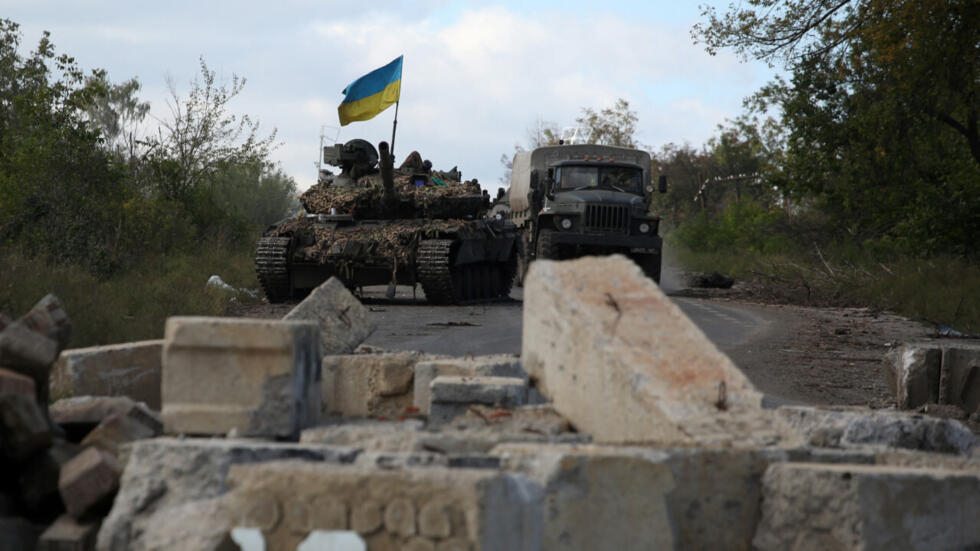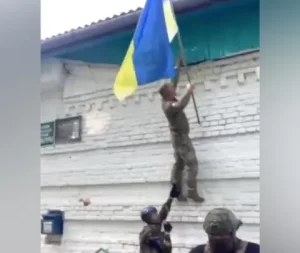Ukraine’s Bold Offensive: Analyzing Risks and Strategic Aims
2 min read

Ukraine has undertaken its boldest and most risky military maneuver this year with a recent incursion into Russian territory. This operation has drawn significant attention for its execution and potential consequences.
A senior British military official, who chose to remain anonymous, praised the Ukrainians for their adept use of combined arms warfare, which involves the integration of various military assets such as air defense, electronic warfare, and ground forces. This approach marked a notable improvement over Ukraine’s previous summer offensive, which had failed to push Russian forces out of the southeastern provinces last year. The effective use of Western-supplied weaponry, including German Marder armored vehicles, was particularly highlighted as a key factor in this more recent success.
Despite these advances, some analysts argue that Ukraine may have already achieved its primary objectives with this incursion. They suggest that the operation has inflicted significant damage on Russian forces and could force a shift in Russia’s strategic focus, potentially easing pressure on Ukrainian positions in the Donbas region. This would support a strategic withdrawal, allowing Ukraine to exit with honor before Russia can amass sufficient forces to counter the incursion.
 However, withdrawing now could undermine two critical goals of the incursion. Firstly, Ukraine sought to exert pressure on Russia, compelling it to divert resources from the Donbas. Secondly, holding onto Russian territory could provide Ukraine with leverage in future peace negotiations. Dr. David Blagden from Exeter University posits that by retaining Russian land, Kyiv could negotiate from a stronger position, demanding the return of its own territory. Additionally, the incursion aims to weaken the perception of Putin’s regime among Russians and encourage the Kremlin to consider a settlement to maintain its grip on power.
However, withdrawing now could undermine two critical goals of the incursion. Firstly, Ukraine sought to exert pressure on Russia, compelling it to divert resources from the Donbas. Secondly, holding onto Russian territory could provide Ukraine with leverage in future peace negotiations. Dr. David Blagden from Exeter University posits that by retaining Russian land, Kyiv could negotiate from a stronger position, demanding the return of its own territory. Additionally, the incursion aims to weaken the perception of Putin’s regime among Russians and encourage the Kremlin to consider a settlement to maintain its grip on power.
President Vladimir Putin, who views Ukraine’s presence on Russian soil as unacceptable, is likely to respond with intensified efforts to expel Ukrainian forces. This response is expected to include increased military pressure on Ukraine in the Donbas and further drone and missile strikes against Ukrainian targets. The severity of Russia’s reaction was evident in recent Russian media coverage, which showed Putin chairing an emergency meeting in Moscow, reflecting his frustration and determination.
The success of Ukraine’s bold move remains uncertain. If Ukrainian forces remain within Russian borders, they will likely face escalating attacks as Russia adjusts its military strategy. Dr. Blagden highlights the challenges associated with sustaining the incursion, noting that the logistics of maintaining and defending the captured territory will be increasingly complex as supply lines stretch and demands on personnel and equipment grow.
In summary, Ukraine’s latest offensive represents a significant and risky escalation in the ongoing conflict. It has showcased improved military capabilities and strategic execution but also introduces substantial risks. The coming days will reveal whether Ukraine’s gamble pays off or if the operation leads to unforeseen challenges and intensified Russian counteractions.